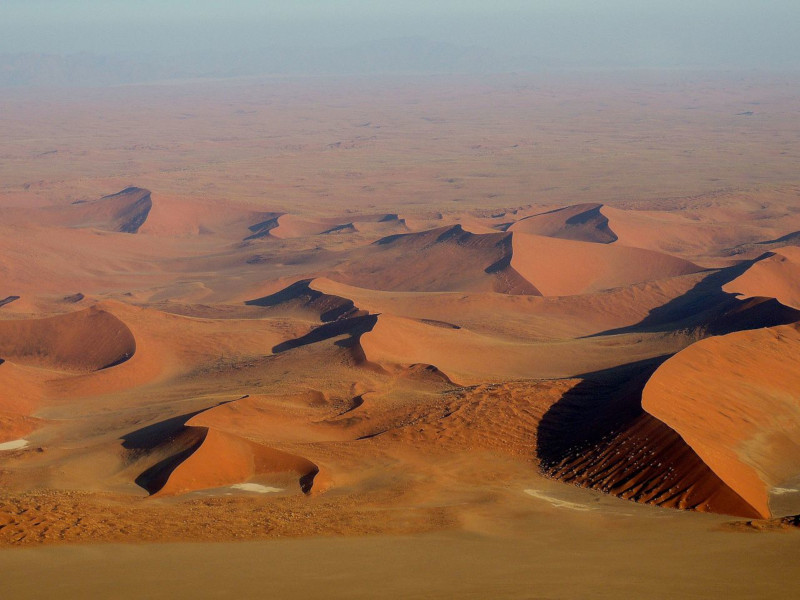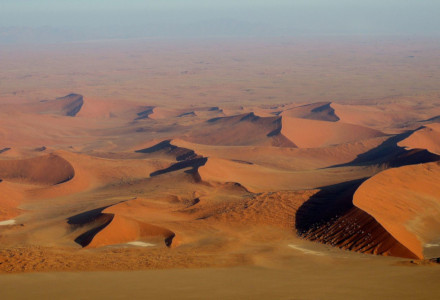
Namib Desert Facts
- Most notably, the astounding Namib Desert remains one of the most remarkable and impressive such features in the world. The incredible feature of geology also represents the only true desert to be found in its part of the continent on which it appears.
- This truly spellbinding location actually holds several distinctions that quite clearly set it apart from other deserts. This marvel of Nature additionally appears to be extremely old. In fact, it potentially constitutes the oldest surviving desert in the world.
- The surprising uncertainty exists due to varying opinions among scientists as to its exact age. This astonishing feature also possesses a somewhat unusual shape. Its dimensions remain highly elongated, with its length being roughly ten times its width.
- The amazing Namib Desert also stands out from similar features for the extreme aridity it developed. It earns this recognition even in comparison with the other desert regions around the globe. To be precise, this magnificent site ranks as dry even for a desert.
- Portions of its area rank among the most arid regions of earth, with only the Atacama Desert, in South America, to rival them. Amazingly, this marvel also serves as home to several species found nowhere else on earth, including the awesome Medusas Head.
- Its many extremes further served to earn it an honorable distinction that few similar features can claim. That holds true since UNESCO named it a World Heritage Site. Of the 23 recognized deserts in the world, only a handful can make that specific claim.
Related Articles
Namib Desert Physical Description
Although the stunning Namib Desert grabs one’s notice for many reasons, physical size isn’t among them. That statement holds true due to the fact that, despite its legitimately impressive numbers, the site only ranks as 23rd among the largest deserts on earth.
This particular desert, although not expansive relative to some, still garners much-deserved notice. To begin with, it must be noted that, like other similar features, the dimensions vary slightly. This, quite understandably, occurs due to various natural processes.
It has an overall length measuring roughly 1,200 mi (1,931 km). Despite this, its overall width generally only averages about 120 mi (193 km). These dimensions, while slightly variable, serve to give the site an extremely elongated, roughly rectangular shape.
In addition to the ubiquitous sand inherent to its nature, the starkly stunning Namib Desert also boasts other remarkable features. Among these, however, its distinctive and visually impressive sand dunes remain of paramount interest to most viewers.
That’s partly because of their extreme size. Amazingly, these natural formations measure an astounding 980 ft (300 m) high. But, these also extend for a difficult to imagine length of about 20 mi (32 km). Due to that, these rank as the second largest in the world.
Namib Desert Location, Geology, and Climate
The Namib Desert also formed in a region of the world known for its natural wonders. It sits on the continent of Africa. The confines of this arid wonderland lie within the boundaries of the countries of South Africa, Angola, and Namibia, from which its name derives.
The site also holds another surprise. This desert actually runs along the edge of the continent, abutting the Atlantic Ocean. It also runs from the Angola-Namibia border in the north, to as far south as the Olifant River, located in Western Cape, South Africa.
The region includes a vast dune sea. These dunes exhibit varying colors. These include hues ranging from bright orange to pink. The variations in color result from differences in the mineral composition of the sand. This part of the desert comes from different sources.
The climate of the Namib Desert remains unique. It consists of several extremes. The aridity stems from dry air descending from a global atmospheric circulation. Meanwhile, humid winds from the ocean create frequent dense fogs along the edge of the desert.
Features Sharing Its Range
Check out our other articles on Earth’s Many Magnificent Marsupials, Oilbird, Hogenakkal Falls, Lily of the Valley, Chinese Giant Salamander, Goliath Stick Insect, Longfin Batfish

